Riverland locals take stock as changed landscape emerges from the water
The awe-inspiring sight of the flooded Murray is giving way to a changed landscape for Riverland locals.
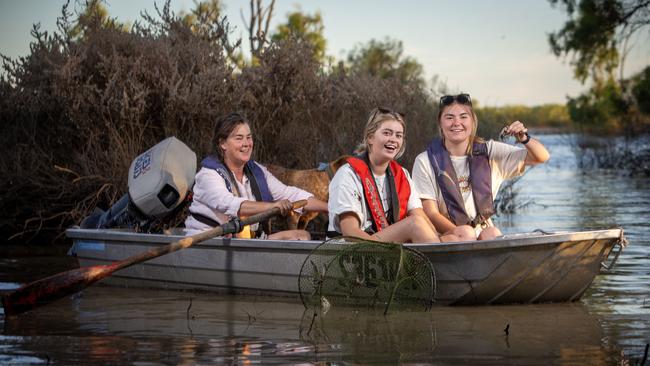
SA News
Don't miss out on the headlines from SA News. Followed categories will be added to My News.
Kate Strachan is making yabbie risotto for dinner.
At the other end of Renmark, just over the Paringa Bridge at Bert Dix Park, Carol Carter is looking forward to a yabbie sandwich, sprinkled with some vinegar.
At 21st St, where flood waters have receded, a bunch of kids are trying to pluck the freshwater crustaceans as they climb up a bridge that has been battered by the vastly expanded Bookmark Creek.
It’s been a long few months for kids conditioned to spend the summer on the water and they are delighted to be out, even if it means ignoring a few ‘no entry’ signs.
It seems everyone in Renmark is out catching yabbies.
Strachan is a fig farmer and viticulturist. To reach her property on the northern outskirts of Renmark you follow a recently built levee along a dusty road.
On the other side of the levee is the water escaping from the swollen Murray. The dead, brown tops of pistachio trees can be seen poking above the levee. On the new water’s edge of Strachan’s property, dozens of treated fence posts have been deposited, arriving from who knows where.
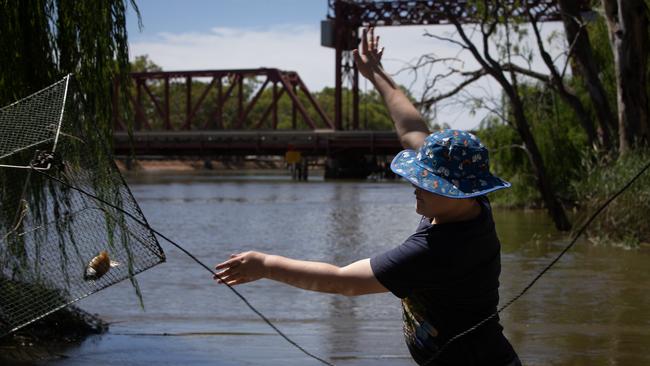
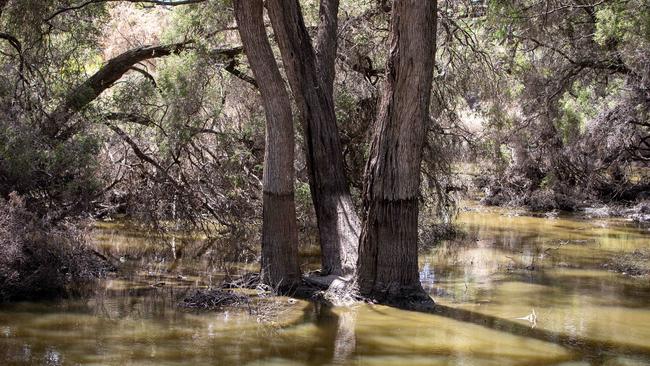
Normally, the nearest water to the Strachan property is Ral Ral Creek, around 800m distant. Now it laps the levee sitting at the bottom of Kate’s driveway. Without the levee, Strachan says, some of her vines would have been underwater, but her house would have been safe.
“Dad was here for the ’56 flood, we knew we were ok,’’ the 55-year-old Strachan said. Her 84-year-old father is out every morning setting the yabbie nets.
Still, Strachan, who vaguely remembers the 1974 flood, said she had seen nothing like the volume of water that has swept through, over and past the Riverland town in recent months.
“I’m not normally surrounded on three sides by water, it’s freaky,’’ she said.
But now the water is starting to recede and a little sense of normality is starting to return, at least on this stretch of the Murray. People are fishing again, and catching yabbies by the bucketload. Small boats are on the water. You can see the highwater marks on trees, on road signs, on barbecues. At the river front in Renmark, a band of dying grass and debris caught in fences, shows how far the water has fallen. The nearby Lyrup ferry has started to run again.
Now, it’s a matter of waiting to see what is left behind when the river falls back to something approaching normal levels.
New Renmark-Paringa mayor Peter Hunter said the council has already spent around $5 million, around half its usual annual budget, on preparing for the flood. But he knows the clean-up is still going to be mighty.
“What’s it going to be like once we go down another metre, metre and a half and we just don’t know,’’ Mr Hunter said.
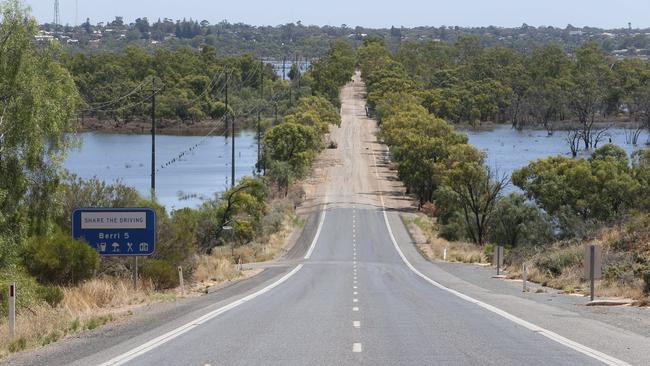
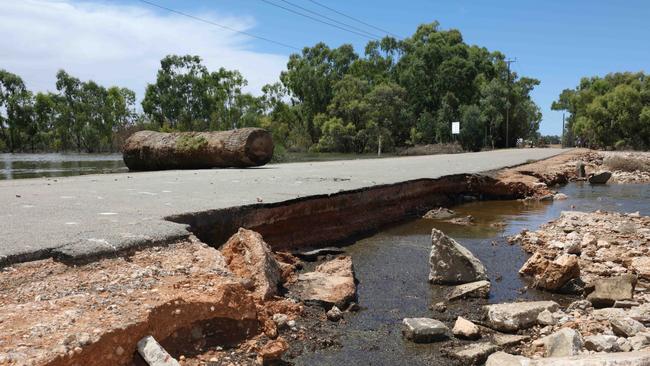
“You have the parks and the gardens and the barbecues and the playgrounds and the grass where the irrigation doesn’t work because you don’t have pumps.’’
There are lessons to be learned, Mr Hunter said. Residents were anxious in the early days because the forecast flows of the river changed so rapidly. He said there has to be more consistency and a focus on river height rather than just on how many gigalitres were rushing over the border.
There needs to be a better way to deal with storm water all along the river. Renmark-Paringa Council has spent $750,000 so far, including on installing 33 pumps, to try to make sure the river water does not shoot back up stormwater drains and into the town. Some outlets had to be filled with concrete to make them safe.
There has also been the obvious impact on tourism and Mr Hunter is hopeful the state government will soon announce a Covid-style tourism voucher program to attract visitors back.
Renmark’s two caravan parks are still closed, although the Big 4 Riverfront park will re-open on Wednesday, even though levees were built to protect them. The region’s houseboat fleet remains at its moorings. Mr Hunter said he had spoken to winery owners whose business had dropped by half.
There is a general consensus the council, and the state government, handled the emergency well. It rapidly built or renovated 38km of levees.
Local Liberal MP Tim Whetstone, who spent much of the last few months talking to the state government, local residents and SA Power Networks, said Renmark had “dodged a bullet’’.
Mr Whetstone is now worried about the clean-up and where the inevitable mountains of rubbish will end up.
“The state government needs to stump up for people to look after sites or allocate areas for people to drop stuff off,’’ he said.
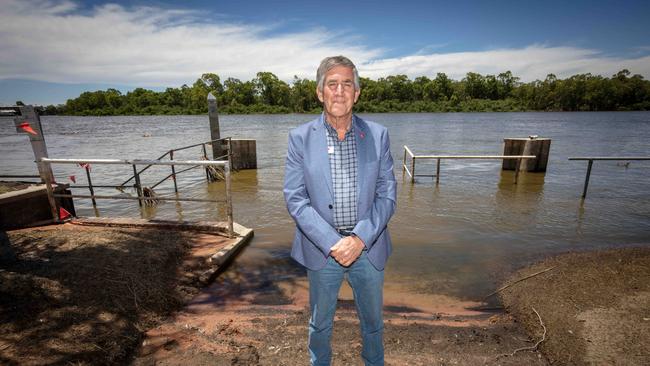
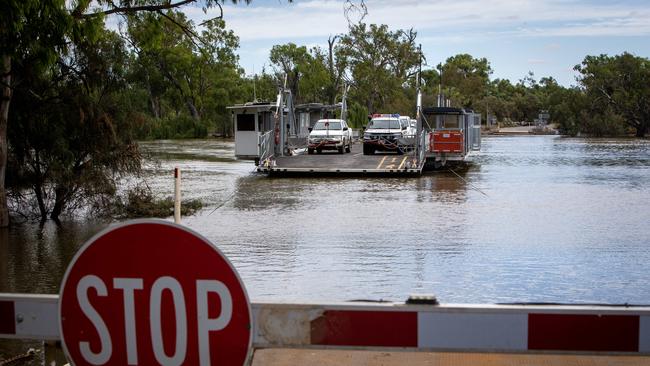
The flood has hit people in unexpected ways. On the Lyrup side of the newly reopened ferry, Noelene Smith is annoyed that she forgot to bring her binoculars. In a park beside the ferry, Smith, has planted a tree and erected a plaque in the memory of her late husband Doug and son Kerryn, who died aged only 19 in a car crash in 1995.
Smith said she would come down every two weeks to visit the river red gum but the floods had stopped her in recent months. But she brings down her binoculars to keep an eye on the still-distant memorial. Before that she would wade out there, sometimes in chest-deep water, before it became too deep.
“I’m keen to get down there and clean up the plaque,’’ she said.
The re-opening of the ferry has been greeted both with relief and frustration by the locals. Shouts of “bet you’re glad to be back at work’’ greet the ferry operator Terry, who tells them he hasn’t been anywhere. Even when the ferries weren’t running, the operators still carried out their 12-hour shifts to keep an eye on the boats.
The closure of the ferry, plus the shutting of Bookpurnong Rd, which links Loxton and Berri, and Gurra Rd, have added long hours to once simple drives. The end of the 2 ½ minute ferry trip across the Murray at Lyrup had added at least 45 minutes each way onto a trip to Berri for support worker Antoinette Alexander.
The downside is the continued road closures are funnelling more drivers to the ferry, meaning long tailbacks, especially in the morning and afternoon as people go to and from work.
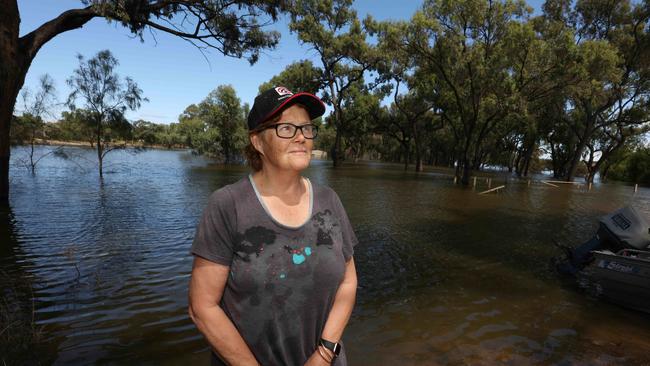
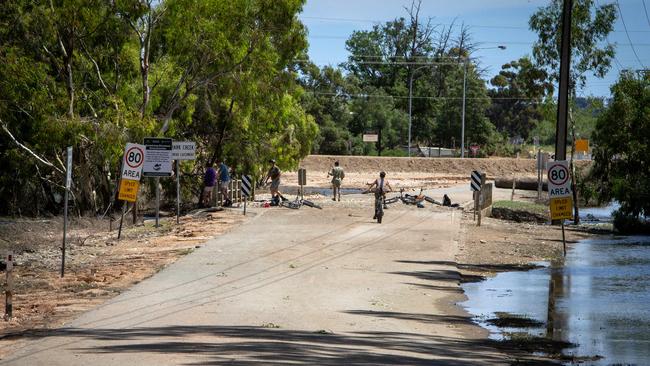
“You would be as well going around, but at least you are saving petrol,’’ she said.
There are pessimistic views that it could be anything up to a year before the 3km stretch of Bookpurnong Rd that was inundated will be open to traffic again.
But other roads are slowly starting to come back to life. The Kingston Rd at Moorook opened to light vehicles last week after strength testing, bringing relief to local residents and businesses.
It will be a slow process and the long-term damage of what Emergency Services Minister Joe Szakacs called the “most significant’’ natural disaster in the state’s history is still to be revealed in Renmark and all the way down the river.
In the meantime, around Renmark there is relief at least the waiting is over and the gradual reclaiming of life can begin.
At Bert Dix Park, Carol Carter is sitting on her chair with a couple of rods. She is here with her son Wayne and 8-year-old grandson Kurt. The idea is to catch the carp, in the water that would not normally be here, and use it as the bait to attract those yabbies. She also has a message for those thinking of visiting the Riverland.
“You can tell the people of Adelaide that it’s safe,’’ she said, before returning to tend to her fishing lines. That sandwich won’t fill itself.




